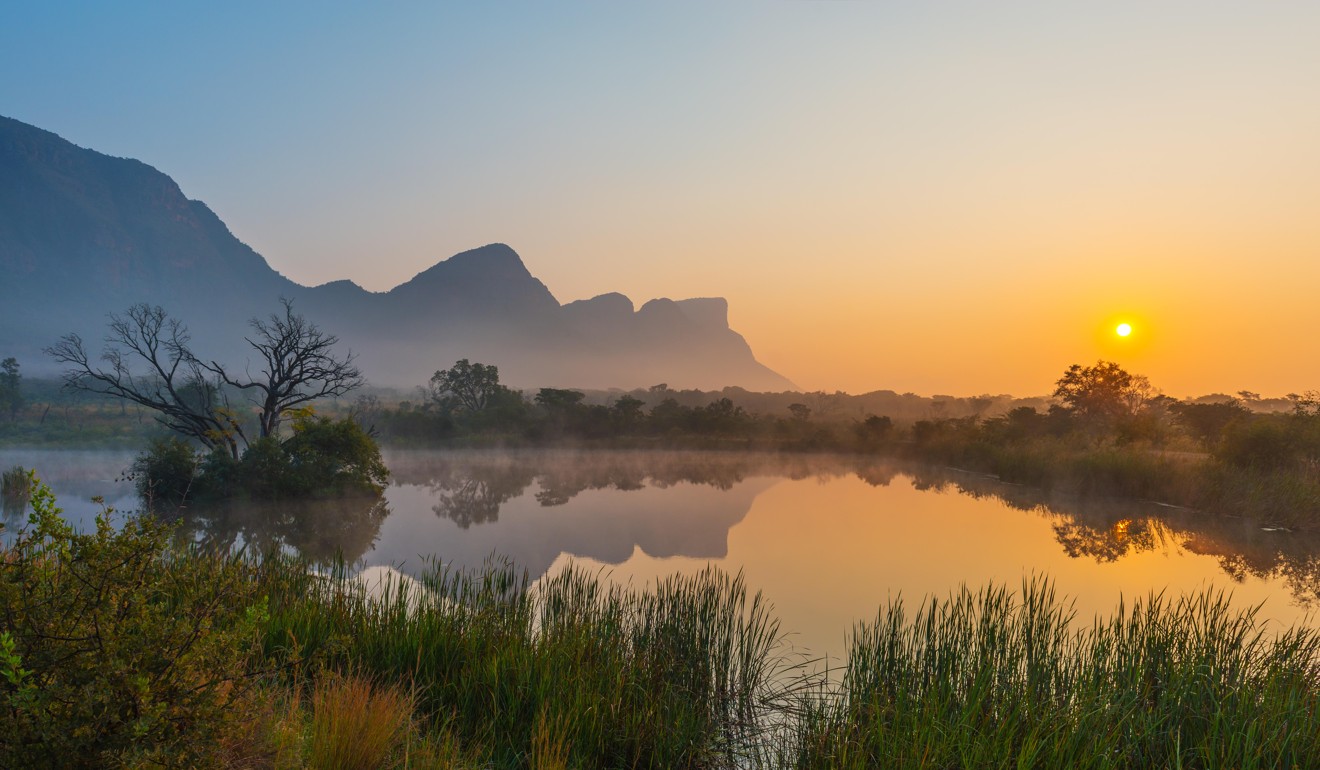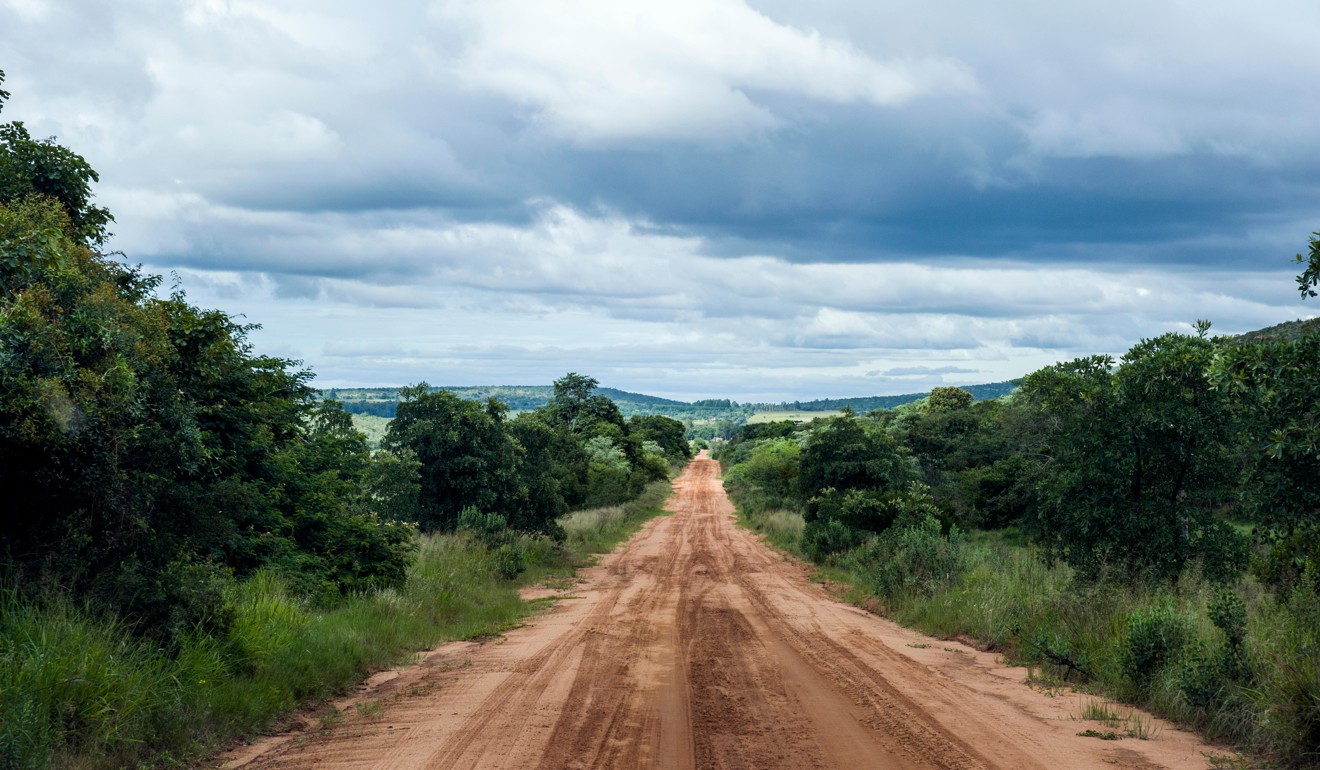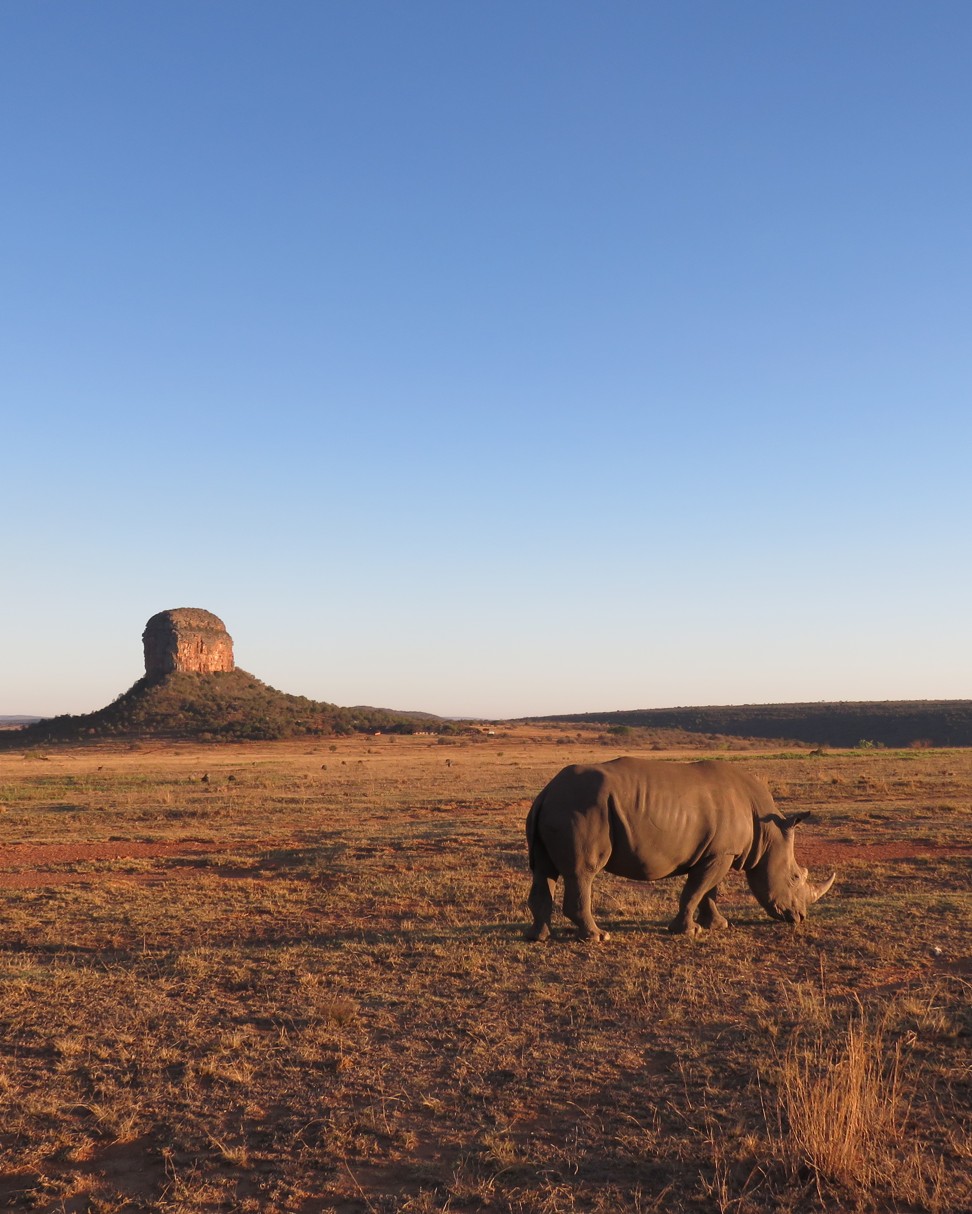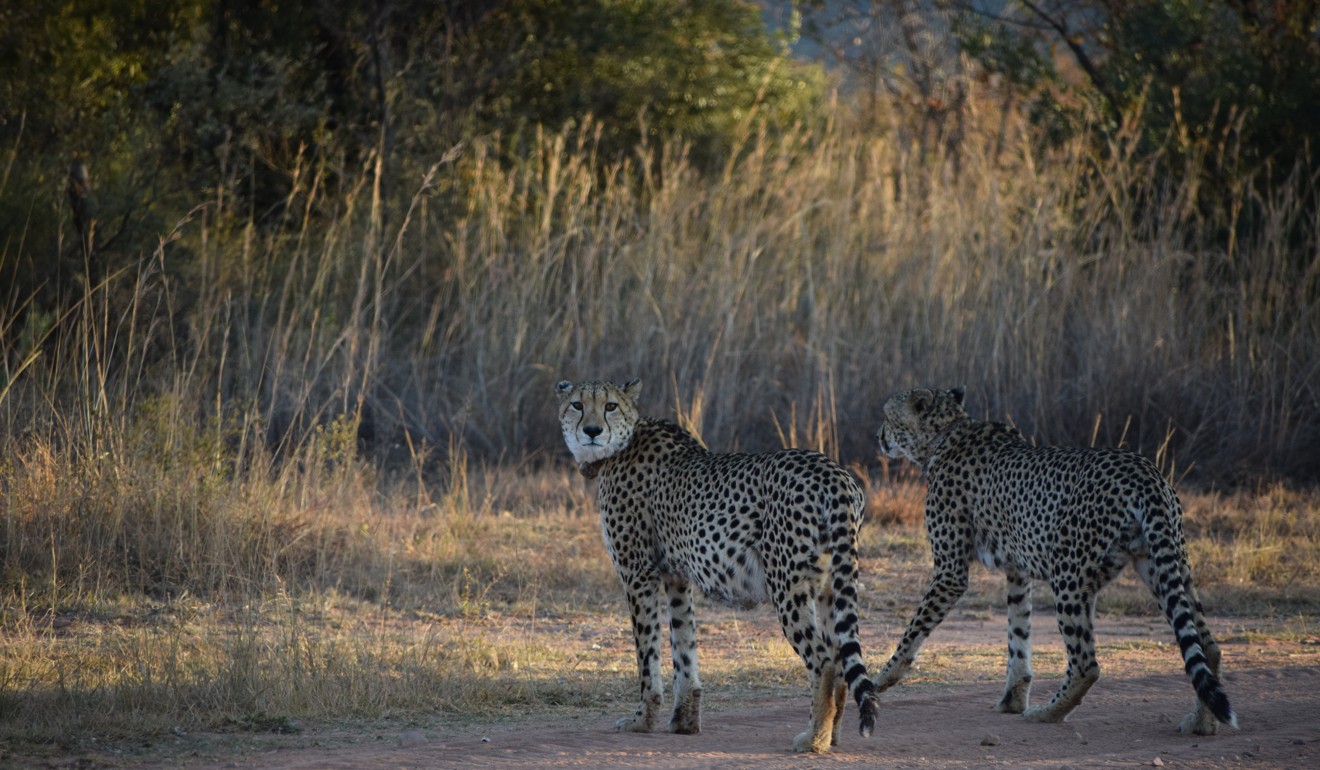
Saving rhinos: the African ultramarathon welcoming Chinese runners to help stop the slaughter
- South Africa’s Entabeni Safari Conservancy is establishing an ultramarathon to support rhino conservation as poaching for horn continues
- Chinese participants are especially welcome, as conservationists hope to change the misconception that rhino horn has medicinal properties

When you trek through African bush on foot, your senses sharpen, movements take on extra urgency and you start talking in whispers.
Solly, the ranger, is constantly scanning the ground for animal tracks. We do not have guns, only running backpacks, but, according to Solly, there is no danger – lions do not come up this high on the plateau, so it’s perfectly safe to hold an ultramarathon.
I have worked on ultras around the world – once, in Sri Lanka, rogue wild elephants on the racecourse led to a revolt by local staff who refused to enter the forest. The ultramarathon we are inspecting the racecourse for is to be held in the Entabeni Safari Conservancy, a private game reserve in South Africa’s northern Limpopo province.
Entabeni’s symbol, a small flat-topped mountain, rises like a colossal tree trunk in the middle of the plain and rhinos, giraffes, wildebeest and zebras wander lazily around it. Continue north and you will realise that you are on a plateau – suddenly a rocky precipice drops you into the lowland part of the park, where crocodiles and hippos splash about in the lush wetlands. Dirt tracks, used by commuting cheetahs, warthogs and zebras, as well as by visitors’ jeeps, connect the reserve’s lodges.
The smiling staff and the idyllic proximity of humans and wildlife belie the war that exists across Africa – a war between rangers and poachers, a conflict of escalating sophistication and brutality, fuelled largely by the soaring demand for rhino horn in China and Vietnam.

“Around 2009 a Vietnamese cabinet minister declared publicly that rhino horn medicine cured his prostate cancer. This was it. Now the rhinos are being slaughtered, and we are close to [the] point of no return. We need all the help we can get now,” says Arrie Van Deventer, a former professional cricketer with a PhD in history, who Entabeni’s staff refer to as a “father figure”.
It was here in Entabeni that Van Deventer opened the world’s first rhino orphanage in 2012 to save the calves whose mothers had been killed for their horns.

Access to the gigantic Chinese market is every tourism operator’s dream, but Entabeni is now focusing on a new variety of Chinese visitors – adventurous outdoor enthusiasts who would rather spend their money on running with rhinos than on powder made from their horns.
Chinese runners are now a force in the ultramarathon world. The Entabeni race is supporting the orphanage financially, and the winners will be allowed to visit it. Hopefully, the elephants and rhinos there shall not hold grudges and graciously share their habitat with them for a few days. And perhaps even make them learn something while they are there.
We visit the orphanage to meet both the orphaned calves and also the volunteers who act as the calves’ surrogate mothers. “Only women can do it – this is the hardest job,” says Van Deventer. “They sleep on the same mat as the calves for several months. They often don’t get any sleep for days and get bashed around by calves. I tried men for this job, but they do not last.”
We arrive at feeding time – a Brazilian and an Australian volunteer summon baby rhinos, which sprint to the enclosure gate, bumping each other out of the way. Milk bottles are emptied in seconds.

Visiting the orphanage is a privilege – it is heavily guarded, and even basic information, such as the numbers of rhinos held, is kept confidential. “My biggest expense is security”, Van Deventer says. “There are cameras, of course, but cameras cannot shoot.
“One orphanage in South Africa has already been stormed by a gang,” he adds. “I will not allow this to happen here. The bastards will not get on the premises.”
The rhinos that live in Entabeni are white rhinos, a docile species, unlike the highly aggressive black rhinos, who are, says Van Deventer, born without a sense of humour. While testing various parts of the course, whenever we run past them, the grazing rhinos perk up and stare at us, perplexed by this unusual human behaviour.
Our concern on the racecourse are not rhinos, however, but elephants and lions. If, during the race, either of these species are found approaching the racecourse, the runners will be warned and diverted to an alternative route by the ranger team.
Entabeni staff know how to manage runners and megafauna – they have already staged the Big Five Marathon and mountain biking events in the reserve. By South African standards, the reserve is small, yet packed with wildlife, and the movements of all animals and humans are tracked continuously by the rangers – partly for visitors’ safety, but also for that of the animals.

Poaching for ivory is nothing new, but now lions, too, are being poisoned across Africa. The global collapse of tiger populations has made lions, especially their bones, a convenient substitute for traditional Chinese medicine usage.
Marco Byleveld, senior ranger at Entabeni, despairs both at the idea of killing a lion for “medicine” and at the attitude of most of the Chinese tourists he comes across professionally: “Most of the group won’t listen to the fact that rhino horn or lion bones are useless as medicine – they just laugh and then ask things like, ‘What does rhino meat taste like?’”
In Entabeni, surrounded by this magnificent wildlife, our instinct is to take photos non-stop, but Byleveld has a word with us about posting on social media.
“Most cameras and phones have GPS tracking now,” he says. “You post a photo of rhinos on social media and poachers can follow it to where the picture was taken. We tell all our visitors not to geotag rhino photos and not to post immediately.”

Many would balk at the idea of bringing people to run in the habitat of wild African animals. But the reality is that there is little “virgin wilderness” left in South Africa – most of the local ecosystems are managed to a certain extent.
Conservation must somehow be financed, and this means monetising the living animals. Alternatively, the combination of Asian demand and African poverty shall soon harvest up the remaining rhinos for horn, lions for bones and elephants for ivory.
“I think the only thing that will stop the slaughter that is happening now is the education of the younger generation of Chinese,” Byleveld says.

GETTING THERE
The easiest way to reach Entabeni (legendhospitality.co.za) is in a hired vehicle from Johannesburg, which is about a four-hour drive. For more details on how to participate in the 265km/165km Xtrm Ultra Run which takes place on April 18 and 20, 2019, and support the orphanage in the process, visit: breathtakingextreme.com